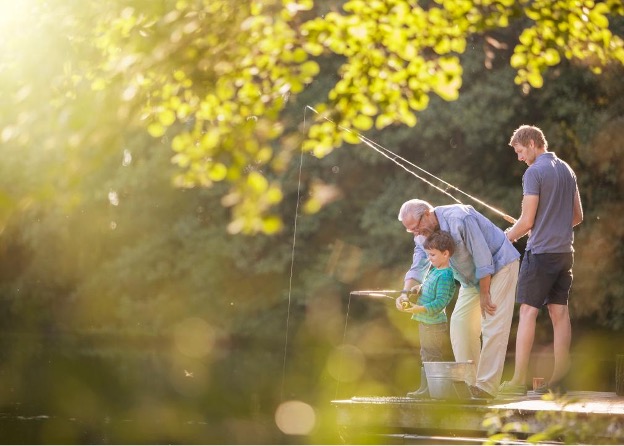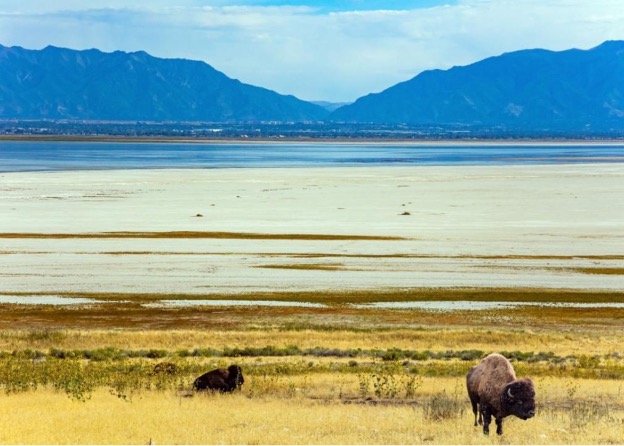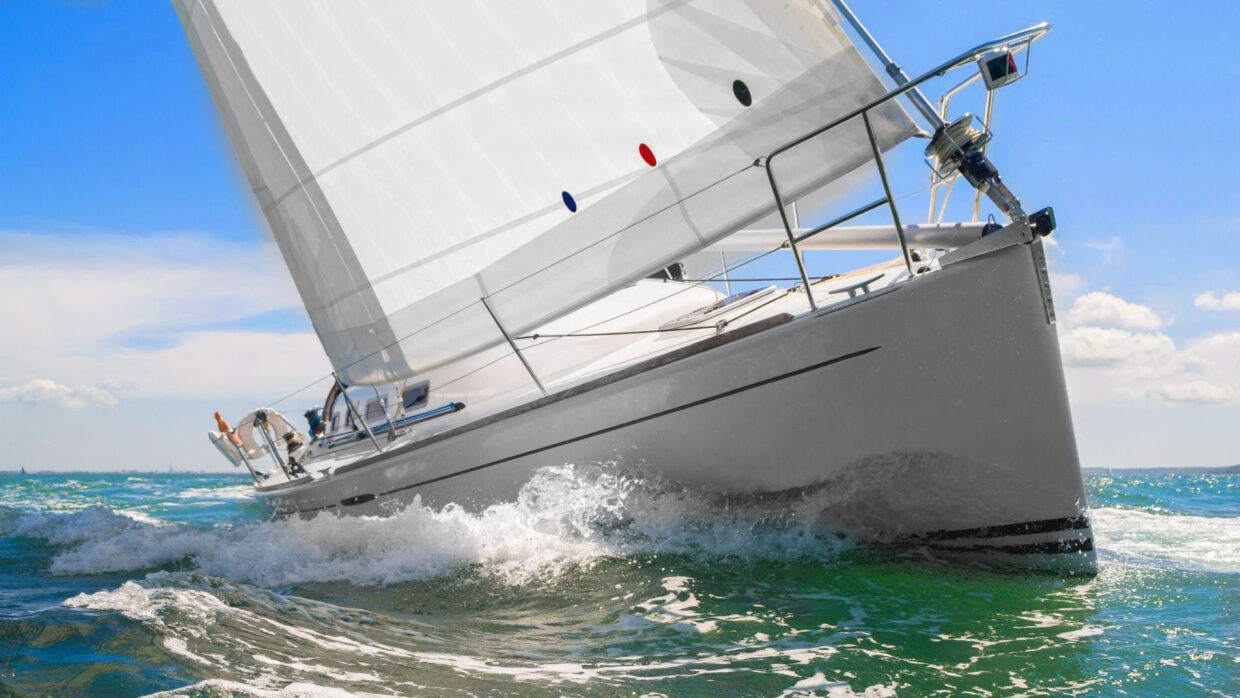Think back to the last boating article you read or conversation you had with a friend about the hobby. You probably heard or read a boating term and weren’t quite sure what it meant. It is no secret that the language of boating is highly complex. We provide the boat terminology clarification you need and deserve below.

Boating Lingo Explained
Whether you are a boating newbie, a veteran of the industry or are considering buying a boat, it is in your interest to know the industry’s verbiage. A comprehensive understanding of the language of boating facilitates clear communication and also helps develop a rapport with colleagues, friends and those who work in the maritime industry. Expand your knowledge from the basics of a vessel to more expansive industry terminology and you’ll get the most out of your boating experiences.
Boat Section Terms:
Port – A boat’s left side.
Aft – The location near the vessel’s stern or by the back end.
Forward – Part of the boat near its bow or front.
Starboard- A boat’s right side.
Stern – The back portion of the boat. The stern is positioned in the area of the engine.
Bow – Front portion of the boat. The bow moves through the water, providing an enjoyable ride for those on the vessel. The bow serves the purpose of deflecting water away from the boat, bolstering its stability and also minimizing the chances of a rollover when currents pick up.
Boat Structural Terms:
Bulkhead – Partition that separates the hull into segments. Bulkheads bolster the hull’s strength.
Bilge – Lowest part of a boat where water gathers. The bilge removes water, pumping it overboard.
Beam – The widest part of the boat, typically in the middle. The beam keeps the boat stable and enhances its carrying capacity. An especially wide beam ensures the boat is stable yet also requires additional power to pass through the water. A beam that is narrow facilitates boat movement yet reduces stability.
Waterline – Line at which the hull of the boat meets the water surface.
Freeboard – Space between the boat waterline and the main deck. Freeboards serve the purpose of enhancing vessel stability, ensuring it carries more weight. Freeboards also dictate the amount of waves and wind the vessel is subjected to.
Deck – Flat part of the boat where passengers or supplies rest. Positioned on the midship, bow or stern, the deck is typically made of fiberglass or wood.
Gunwale – Upper portion of the hull at which the sides adjoin with the deck. Sometimes called molding or trim, gunwale safeguards the boat from scraping and bumping.
Galley – Kitchen on the boat.
Casting Deck – Platform for fishing, typically positioned at the boat’s front.
Cabin – Enclosed area on the boat, often below the deck, used for safety and rest.
Console – Area on a vessel where the captain is positioned for steering.
Cockpit – Space with controls and instruments where the captain stands.
Transom – Flat panel that creates the back end or stern of the boat. Transoms offer structural support along with an area to mount the boat’s motor and additional hardware.
Hull – Boat’s watertight body portion that ensures the vessel floats.
Boat Functionality Terms:
Bilge Pump – Essential component of boat that ensures the bilge remains free of water. Bilge pumps are available in a litany of styles/sizes yet serve the purpose of keeping the boat dry. The majority of bilge pumps operate automatically with a float switch.
All Around Light – White light that can be seen from afar to reveal the location of the boat to other ships.
Trolling Motor – Diminutive electric motor that moves boats at slow rates of speed as opposed to main propulsion. The purpose of the trolling motor is to move the vessel as fishing is conducted at slow rates of speed.
Bimini Top – Canopy type that offers shade to those on the boat. Positioned on the frame connected to the boat, the bimini top consists of stainless steel or aluminum and is protected with a canopy.
Anchor – Device that connects a boat to the bottom of a water body. The anchor chain is attached to keep the boat in position in the event of a powerful current or inclement weather.
Fishfinder – Graph that functions with electronic pulses to identify fish below the vessel.
Fenders – Bumpers consisting of plastic or rubber positioned on the boat’s side, safeguarding the boat from collisions at the point of docking.
Cleats – Locking devices that tie boats in place. Cleats are typically bolted directly onto the deck of the boat.
Hatch – Opening or door that offers access to the space that is enclosed.
Hardtop – Boat cover consisting of hard material to protect against inclement weather and sun.
Jack plate – Flat plate connected to the transom for mounting the outboard motor. The jack plate also alters the outboard motor positioned for optimal safety and performance.
Hotfoot – Hotfoots are commonly found on bass boats or other high-performance boats. A hotfoot is a pedal-operated throttle similar to a gas pedal in an automobile. Depressing the pedal causes the boat to accelerate while pulling back on the pedal results in deceleration.
Propeller – Device that propels the boat. Made with spinning blades that generate thrust, propellers connect to the engine of the boat through the shaft.
Parts of a Boat Terms:
Forestay – Wire rod or rope that moves from the masthead to the boat’s bow.
Boom – Extends horizontally from the sailboat mast, providing the sails with support and proper positioning.
Centerboard – Removable fin in the center of the vessel connected to the boat bottom. The centerboard ensures lateral resistance to strong current and winds, ensuring the boat transitions through the water with ease.
Keel – Lengthy piece of wood/metal that moves along the hull bottom, ensuring stability and water/wind resistance.
Jib – Sail in the shape of a triangle that connects to the forestay of the boat, used to propel the vessel.
Winch – Mechanical device that unwinds/winds cable or rope, typically used for the raising/lowering of sails.
Wheel – Circular object used to facilitate boat steering, commonly located in the boat’s center console.
Shroud – Line with a sizable diameter that runs masthead to keep for lateral mast support.
Mainsheet – A line used for controlling the boat’s mainsail. The mainsheet controls boat direction and speed through ongoing adjustments.
Mainsail – Exactly as it sounds, serving as the primary sail of the boat, positioned at the rear of the vessel. The mainsail connects directly to the mast, helping the boat move ahead.
Rudder – Flat wood/metal connected to the back of the boat, used for steering the vessel through a redirection of water along the rudder.
Tiller – A lengthy pole that steers the boat’s rudder.
Pulpit – Raised boat platform, usually by the bow, where an individual can stand to see with clarity.
Mast – Lengthy pole positioned vertically that supports the boat’s sails. Masts also provide masthead support.
Boat Motor Types:
Outboard Motor – Motor propulsion system with a self-contained engine, propeller and gears connected to the exterior of the transom.
Inboard motor – Boat engine connected to the hull of the boat as opposed to the exterior of the hull.
Jet drive – Boat propulsion system that functions with a water jet to move the boat ahead.
Sterndrive – Engine connected by the boat’s back. This engine connects to the boat propeller through a longdrive shaft that moves through the hull.




